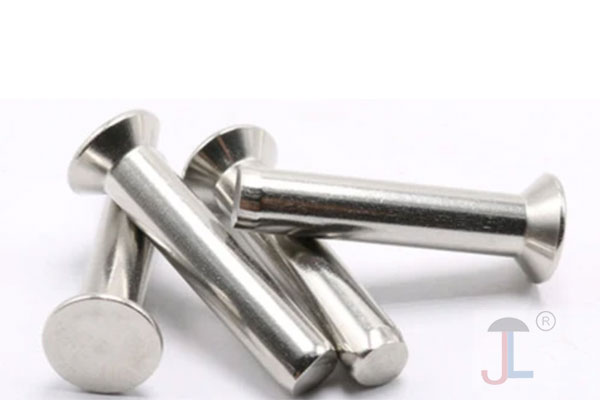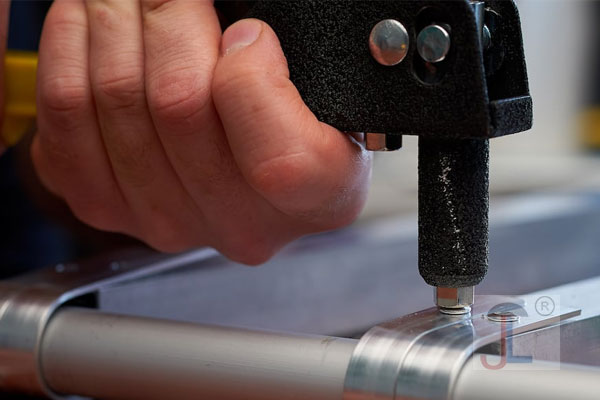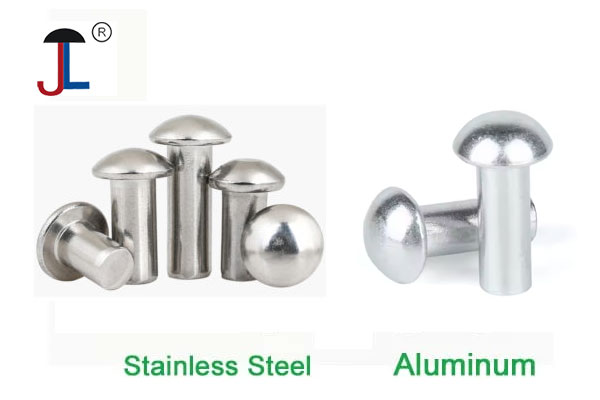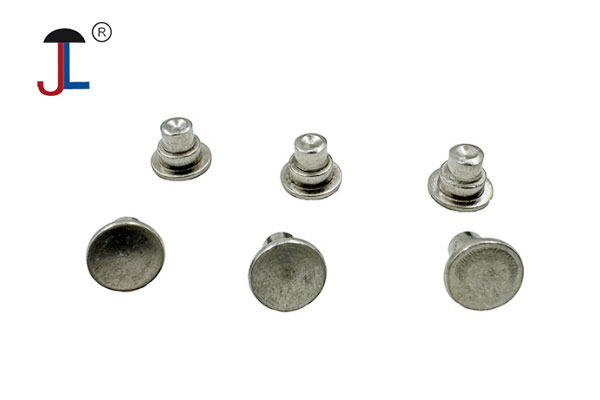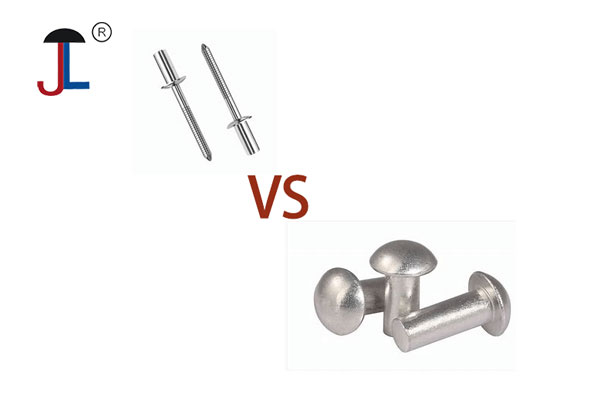Common Grades of Stainless Steel Used in Rivets
The term "stainless steel" encompasses a wide array of steel alloys, each with a unique composition that dictates its properties. Among these, the austenitic 300 series stands out as a dominant group, representing approximately three-quarters of all stainless steel production. Within this series, several grades are commonly employed in the manufacture of rivets. Grade 304, also known as 18-8 or A2, is a widely specified austenitic stainless steel containing roughly 18% chromium and 8% nickel. This composition provides a good balance of corrosion resistance in various environments, including food processing, marine, and architectural applications, along with favorable strength and ductility. Its widespread use makes it a common choice for general-purpose rivets.
Another prominent grade is 316, sometimes referred to as A4, which boasts enhanced corrosion resistance due to the addition of molybdenum (typically 2-3%) to its chromium and nickel composition (approximately 16% and 10%, respectively). This addition makes 316 particularly resistant to corrosion from chloride ions, rendering it ideal for harsh conditions such as saltwater environments, swimming pools, and chemical processing. Given Sydney's coastal location, the superior chloride resistance of 316 suggests it would be a particularly suitable choice for applications exposed to the marine environment.
While 304 and 316 are prevalent, other grades also find use in rivet manufacturing. Grade 302, another austenitic stainless steel, offers excellent toughness and ductility and is often used for washers, springs, and cables. Grade 18-8 stainless steel, similar to 304 with its 18% chromium and 8% nickel content, provides impressive strength and good corrosion resistance for many environments, though it may exhibit corrosion when exposed to chlorides, limiting its suitability for marine applications compared to 316. For applications where strength and hardness are prioritized, martensitic grades like 410 and 416 are considered. Grade 410 offers good wear and corrosion resistance in mildly corrosive environments, while 416 is known for its excellent machinability. However, these grades generally offer lower corrosion resistance compared to the 300 series in more aggressive environments. The selection of the appropriate stainless steel grade is therefore a critical decision, directly impacting the rivet's ability to withstand both mechanical loads and environmental factors.
| Stainless Steel Grade | Typical Applications | Corrosion Resistance | General Strength |
|---|---|---|---|
| 304 (18-8, A2) | General purpose, food processing, marine, architectural | Good in a wide range of environments | Good |
| 316 (A4) | Harsh environments, marine, chemical processing, medical | Superior, especially against chloride ions | Good |
| 18-8 | General hardware, wastewater treatment, catering | Good, but less resistant to chlorides than 316 | Impressive |
| 410 | Automotive, outdoor equipment, mildly corrosive environments | Good in mildly corrosive environments | High |
| 416 | Nuts, bolts, screws, gears, valve trim | Good in mildly corrosive environments | High |
Influence of Rivet Dimensions on Load Capacity
Rivet Diameter
The diameter of a stainless steel rivet is a primary determinant of its load-bearing capacity. A larger diameter directly translates to a greater cross-sectional area of the rivet, enabling it to distribute applied stress over a wider area more effectively. This increased area allows the rivet to withstand higher tensile and shear forces before failure occurs. For instance, a 3/16" diameter 18-8 stainless steel blind rivet can have a tensile strength of around 1,200 lbs and a shear strength of approximately 950 lbs. Similarly, a 4mm diameter marine-grade 316 stainless steel blind rivet can exhibit a shear strength of 2700 N and a tensile strength of 3500 N. These figures illustrate how increasing the rivet diameter generally leads to a significant increase in its ability to resist both pulling and sliding forces.For applications involving thicker or more heavily loaded materials, larger diameter rivets are typically recommended to ensure a robust and reliable connection. While the general rule of thumb in aerospace suggests a rivet diameter approximately three times the thickness of the thinnest sheet being joined , this guideline may not be universally applicable across all industries, and a comprehensive evaluation of the specific joint configuration, material properties, and anticipated load is crucial. Ultimately, the selection of the appropriate rivet diameter is a critical engineering decision that directly impacts the structural integrity and safety of the assembly.
| Nominal Rivet Diameter | Material (Body/Mandrel) | Tensile Strength (Min.) | Shear Strength (Min.) |
|---|---|---|---|
| 1/8" | Stainless Steel/Steel | 530 lbs | 420 lbs |
| 1/8" | Stainless Steel/Stainless Steel | 530 lbs | 420 lbs |
| 1/8" | Stainless Steel/Stainless Steel | 280 lbs | 230 lbs |
| 5/32" | Stainless Steel/Steel | 820 lbs | 650 lbs |
| 5/32" | Stainless Steel/Stainless Steel | 820 lbs | 650 lbs |
| 3/16" | Stainless Steel/Steel | 1200 lbs | 950 lbs |
| 3/16" | Stainless Steel/Stainless Steel | 1200 lbs | 950 lbs |
| 3/16" | Stainless Steel/Stainless Steel | 1200 lbs | 950 lbs |
| 4mm | Marine Stainless Steel (316)/316 | 3500 N | 2700 N |
| 4.8mm | Stainless Steel (A2)/Stainless Steel (A2) | 7500 N | 5700 N |
| 5mm | Stainless Steel (A2)/Stainless Steel (A2) | 5900 N | 4700 N |
| 6mm | Stainless Steel (A2)/Stainless Steel (A2) | 7500 N | 5700 N |
Estimated Load-Bearing Capacities
General Guidelines and Charts
Estimating the load-bearing capacity of a stainless steel rivet requires considering its specific dimensions and the grade of stainless steel used. While precise values are often best obtained from manufacturer specifications, general guidelines and charts available from various sources can provide a useful initial understanding. For instance, a 3/16" diameter blind rivet made from 18-8 stainless steel with a stainless steel mandrel can have a minimum tensile strength of 1,200 lbs and a minimum shear strength of 950 lbs. Another source indicates that for stainless steel rivets with a steel body, a 3/16" diameter rivet can achieve a minimum shear strength of 950 lbs and a minimum tensile strength of 1200 lbs. For a 4mm diameter blind rivet made from marine-grade 316 stainless steel with a 316 stainless steel mandrel, the shear strength is listed as 2700 N, and the tensile strength as 3500 N.General guidelines based on material thickness also exist. For example, for stainless steel (316) rivets, a recommended diameter of 3.2 mm might offer a typical shear strength of 4-6 kN when joining materials with a total thickness of 1-3 mm. Similarly, a 4.0 mm diameter rivet might provide 8-12 kN shear strength for a total thickness of 3-6 mm, and a 4.8 mm rivet could offer 12-18 kN for a thickness of 6-10 mm. Furthermore, the type of rivet construction plays a role. Closed-type or multi-grip rivets often exhibit 30%-50% higher shear resistance compared to open-type rivets due to their mechanical interlocking structure. These general figures and guidelines serve as valuable starting points, but it is crucial to consult more specific data for critical applications.
| Nominal Rivet Diameter | Approximate Tensile Strength | Approximate Shear Strength | Stainless Steel Grade (if specified) | Rivet Type |
|---|---|---|---|---|
| 3.2 mm (1/8") | 2200 N | 1800 N | A2 (304) | Blind Dome |
| 3.2 mm (1/8") | 2593 N | 1870 N | STST | Blind Dome |
| 4.0 mm (5/32") | 4012 N | 2893 N | STST | Blind Dome |
| 4.8 mm (3/16") | 5872 N | 4228 N | STST | Blind Dome |
| 4.8 mm (3/16") | 5700 N | 2358 N | G304 | Blind Countersunk |
| 5.0 mm | 5900 N | 4700 N | A2 | Blind Dome |
| 6.0 mm | 7500 N | 5700 N | A2 (304) | Blind Dome |
| 6.4 mm (1/4") | 9350 N | 7570 N | STST | Blind Dome |

